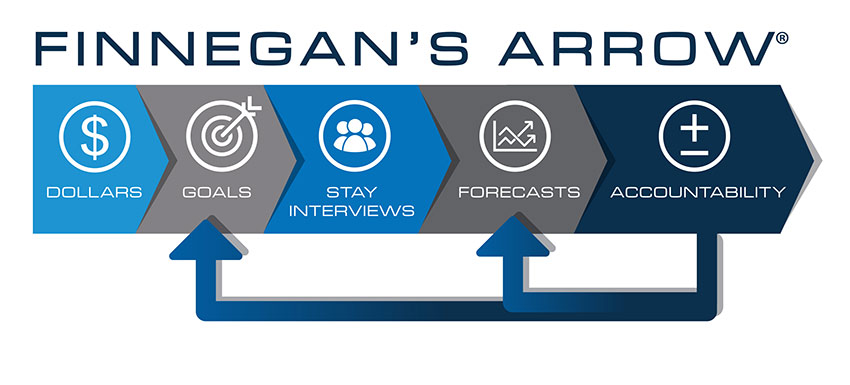Most hiring tools answer whether candidates can and will do the job, but not if they’ll stay. Learn how realistic job previews and motivational-fit interviews can improve retention from day one.
The Real Secret to Cutting Turnover Is…

2012 was the beginning of the Stay Interview revolution when I first shared my proven method with thousands of HR and C-Suite Executives through a book I authored called The Power of Stay Interviews. Ten years later, and as recent as last week, Stay Interviews are now considered a best business practice for companies and organizations truly committed to employee retention.
I take tremendous pride in shepherding this important tool into the our consciousness, and appreciate when people share their stories of positive impact, but I must confess the truth… Stay Interviews are not the REAL secret to cutting turnover 20% or more.
Couldn’t have cut turnover 20% and more without Stay Interviews
Let me be clear…every single one of our clients would tell you they couldn’t cut turnover without Stay Interviews…and they would be right. If we all agree that the number one reason employees quit their jobs is because they don’t trust their immediate supervisors…and research says this is true…then Stay Interviews are the most important tool for leaders at all levels to build trust.
Think to yourself how you would feel if your manager said to you, “I want to have a meeting with you to learn what I can do to make working here better for you”. And then your manager asked five carefully researched questions, listened to your answers, probed to learn more, took notes, and acted on what you said. Pretty powerful stuff.
To Cut Turnover You Must Know Your Goals
But applying Stay Interviews to cut turnover requires the systematic transfer of employee retention accountability from HR to operations. What does this really mean? That managers must become accountable for turnover, not HR, and only then will they conduct Stay Interviews with heart…along with full intentions to achieve employee retention goals.
How backward is it that organizations have “big hairy goals”/WIG goals/strategic goals for so many metrics, yet for turnover the implied goal is to make it better. Worse, though, is who owns that “non-goal”? Who is charged with making turnover better?
Our clients have been working to cut turnover with us for more than 11 years, and during that span I’ve found no correlation between company size and company savvy regarding employee retention goals. I could name client companies with 50,000-plus employees that have no clue regarding the importance of establishing employee retention goals, let alone assigning those goals to the first-line leaders who have the most influence on whether their employees stay or leave.
Cutting Turnover Epiphany
I proudly tell people I am a recovering HR director because my last job at a Fortune 500 firm directly led me to my passion for helping all companies elevate their understanding of the importance of employee retention. In my last role, my CEO asked me to cut employee turnover. He expected the usual HR answer, that we would initiate anything that ended in “survey”, preceded by “exit”, “engagement”, “salary”, or “benefits”. Instead, we dug into our numbers and had the epiphany that we needed our hundreds of bank managers to accept an employee retention goal.
Oh, there was a lot of their complaining, but when turnover fell off a cliff by 19% in just four months, which we specifically could measure now, the results spoke for themselves. Then, what really caught our executives’ attention was the more than $4 million in savings in those same four months. We offered no additional training, nor pay, nor benefits. Simply gave concrete goals to each manager, tracked their turnover on a monthly report against that goal and made it transparent company-wide with their names next to their results.
This was the greatest lesson of my career.
The Real Secret Sauce for Cutting Turnover is Accountability
When we developed our comprehensive turnover solution, we incorporated proven employee retention tactics and best business practices that our clients found worked consistently no matter the size of the company and the outcome is this:

Stay Interviews are the keystone, the middle rock that provides the fuel for leaders to build trust and therefore retain their teams. But flanking Stay Interviews are the data-driven components that measure the success and the MOST important of these components is Accountability to the far right.
Would supervisors consistently conduct Stay Interviews if you didn’t report their performance against employee retention goals? I suspect not. Accountability is key to consistency, transparency, and feeds the other two reporting metrics – Goals and Forecasts.
Goals are important to the big picture goals, but Forecasts provides a second new metric by asking leaders on all levels to forecast how long each employee will stay, beginning with each employee’s first Stay Interview.
We tell supervisors this when training them on forecasts: “If five of your employees leave and you forecasted four of them to leave within a year, I would think you’re pretty connected with your team. But if five of your employees leave and you forecasted four of them to stay within a year, I’d be doubting if you’re connected with your team.”
Powerful stuff that is transparent to every other leader with access to the reporting.
So which component most drives cutting turnover? My vote is Accountability. Most CEOs would tell you the heart of their organizations is sales, so it’s no surprise, then, that leveraging traditional corporate sales structures of accountability for motivation also works for cutting turnover. Did you make your goals? Did you develop accurate forecasts?
I am thrilled that 10 years later, Stay Interviews are still the most accepted method for managers and employees to connect and build trust one-on-one. But it’s the business-driven processes of goals, forecasts, and accountability where cutting turnover really happens.
Does your strategy to cut turnover include accountability?
If data and accountability are not part of your turnover strategy, it may be time to re-think your approach. Schedule a conversation with me at DFinnegan@C-SuiteAnalytics.com to discuss your plans, your roadblocks, how to move forward, and what is working for other companies to cut turnover by 20% and more, even during “The Great Resignation” that may benefit you.



